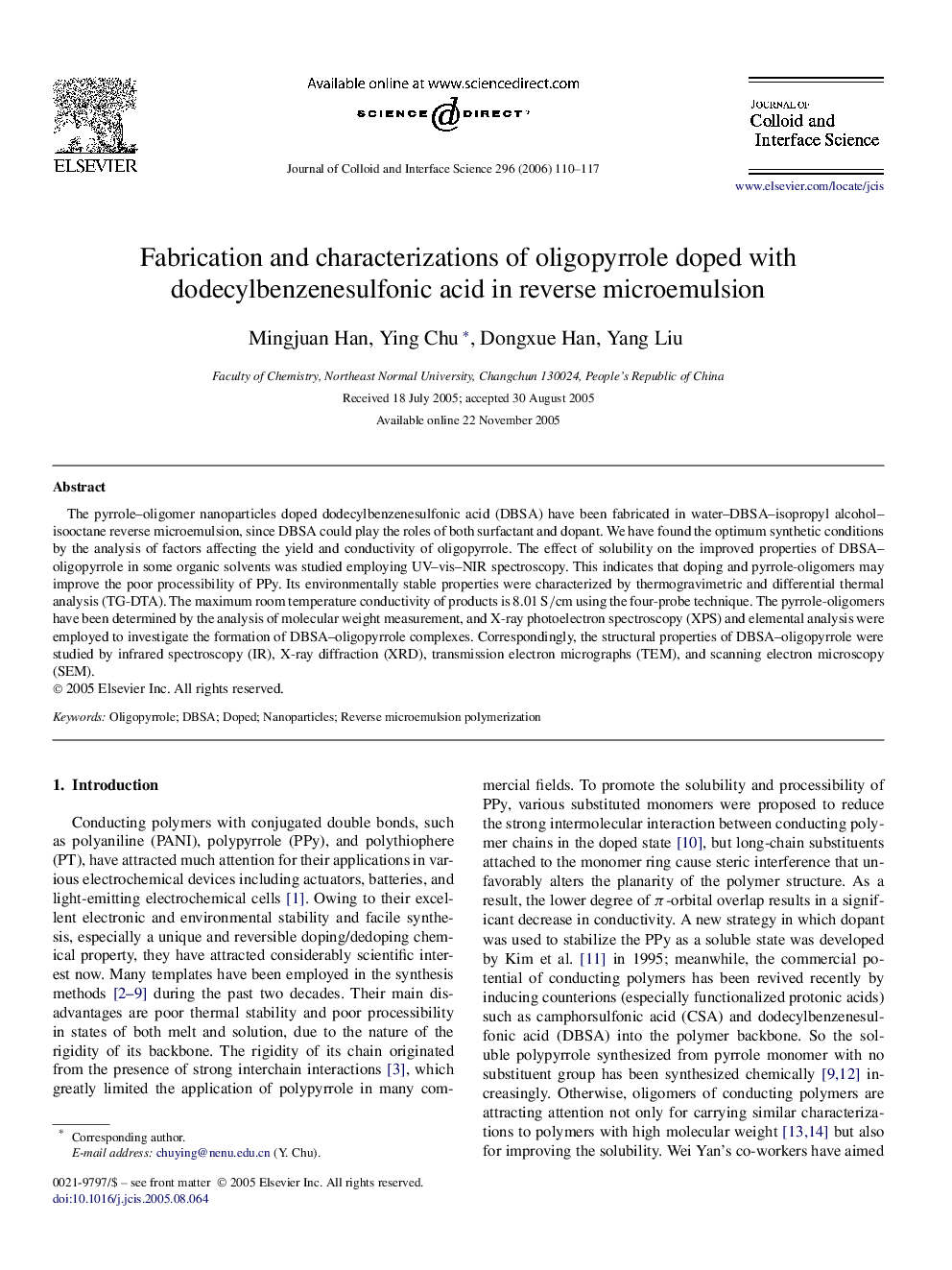| کد مقاله | کد نشریه | سال انتشار | مقاله انگلیسی | نسخه تمام متن |
|---|---|---|---|---|
| 613504 | 880723 | 2006 | 8 صفحه PDF | دانلود رایگان |

The pyrrole–oligomer nanoparticles doped dodecylbenzenesulfonic acid (DBSA) have been fabricated in water–DBSA–isopropyl alcohol–isooctane reverse microemulsion, since DBSA could play the roles of both surfactant and dopant. We have found the optimum synthetic conditions by the analysis of factors affecting the yield and conductivity of oligopyrrole. The effect of solubility on the improved properties of DBSA–oligopyrrole in some organic solvents was studied employing UV–vis–NIR spectroscopy. This indicates that doping and pyrrole-oligomers may improve the poor processibility of PPy. Its environmentally stable properties were characterized by thermogravimetric and differential thermal analysis (TG-DTA). The maximum room temperature conductivity of products is 8.01 S/cm using the four-probe technique. The pyrrole-oligomers have been determined by the analysis of molecular weight measurement, and X-ray photoelectron spectroscopy (XPS) and elemental analysis were employed to investigate the formation of DBSA–oligopyrrole complexes. Correspondingly, the structural properties of DBSA–oligopyrrole were studied by infrared spectroscopy (IR), X-ray diffraction (XRD), transmission electron micrographs (TEM), and scanning electron microscopy (SEM).
The pyrrole–oligomer nanoparticles doped dodecylbenzenesulfonic acid (DBSA) have been fabricated in water–DBSA–isopropyl alcohol–isooctane reverse microemulsion, since DBSA could play the roles of both surfactant and dopant. We have found the optimum synthetic conditions by the analysis of factors affecting the yield and conductivity of oligopyrrole. The effect of solubility on the improved properties of DBSA–oligopyrrole in some organic solvents was studied employing UV–vis–NIR spectroscopy. Infrared spectroscopy (IR), transmission electron micrographs (TEM), scanning electron microscopy (SEM), differential thermal analysis (TG-DTA), and elemental analysis, etc. were employed to investigate DBSA–oligopyrrole particles.Figure optionsDownload as PowerPoint slide
Journal: Journal of Colloid and Interface Science - Volume 296, Issue 1, 1 April 2006, Pages 110–117